Gas hoses: types of gas hoses + how to choose the best
From the moment of the appearance of the first gas appliances and until recently, they were connected only with steel pipes.
Now everything has changed dramatically: flexible gas hoses, which have already managed to virtually supplant their obsolete predecessors, have firmly entered into use. They are much more convenient in operation, easier and faster connected to the highway.
You do not know what type of hose to choose from the range offered by the market? Let's understand together - the article discusses the main types of products used to connect gas, their advantages and disadvantages are highlighted.
We also provide useful recommendations for choosing the best option for flexible eyeliner. The material is supplemented by video tips and visual photos with the image of hoses from various materials.
The content of the article:
Varieties of gas hoses
There are many models of movable joints on the market. Among them, there are three main types of modern hoses for gas supply: rubber-fabric, reinforced, bellows.
In the process of their production, different materials are used that differ in technical characteristics, operating conditions and service life. Each type of product has both pros and cons. Which of the gas hoses is better to choose depends on the specific situation, installation location, household appliance.
Type # 1 - rubber and fabric products
Rubber fabric hoses are the easiest and cheapest option. These are soft rubber sleeves reinforced with durable textile thread. They are quite unpretentious to use.
The rubber from which the hoses are made is supplemented with elastic components that extend the life of up to 5 years. The material does not conduct electricity, bends well. However, over time, it begins to crack, which is fraught with possible gas leaks.
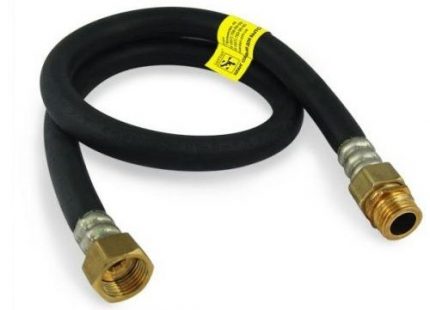
Advantages of rubber products: affordable cost and quick installation, flexibility and excellent electrical insulation, the presence of numerous models of different diameters and sizes.
But there are also disadvantages:
- high sensitivity to mechanical stress;
- minimum protection against temperature extremes;
- insufficient rigidity.
This type of eyeliner is characterized by a high degree of danger. Even dielectric capabilities cannot prevent the natural wear of rubber.
It is allowed to connect only to gas bottlesbut subject to replacement every two years in order to prevent unpleasant consequences. Positive feedback characterized several brands of rubber sleeves: IndustriasMateu, GasLink, Kuzuflex.
View # 2 - metal-braided rubber hoses
This variety is a reinforced sleeve made of vulcanized rubber braided on the outside with steel threads. The inner part is made of polymeric materials.
The polymer, placed in the middle, is subject to destruction and destruction as well as rubber. In addition, steel serves as a conductor of electricity.
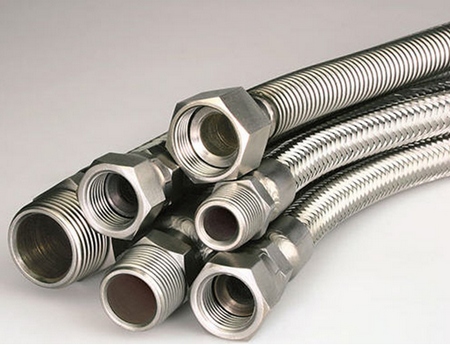
When connecting such hoses, it is imperative to use additional insulator inserts, placing them between the eyeliner and the household appliance.
Product Advantages:
- low price;
- ability to withstand high temperatures (up to 50 degrees);
- simplicity of installation and operation.
Among the shortcomings, the dubious reliability of internal polymer compounds and the low level of electrical insulation should be noted.
Reinforced gas devices are easy to distinguish from water piping by the color of the outer braid: they are usually marked in yellow, and their water counterparts in red and blue. At the moment, brands Ecoflex, GAS-FLEX, Fado are in demand.
View # 3 - bellows gas hoses
Flexible bellows-type devices are recognized as the most practical and safe type of gas inlet. These are hermetic sleeves made of stainless steel and polymeric materials reinforced with corrugation, repeating the shape of a ring or screw. A wire is included in its composition, due to which high pressure is maintained.
At the ends of the products, fittings made of brass or carbon steel with thread are installed, equipped with gaskets. Such elements are necessary for direct connection to the equipment.
According to manufacturers, flexible bellows eyeliners are made by analogy with the structure of the human intestine. That is why they freely resize. Repeatedly bending, stretching and becoming significantly longer, the hoses do not lose their original elasticity, strength and performance.
In practice, it is not advisable to stretch the product more than 50 percent of the original length, since this negatively affects its stiffness.
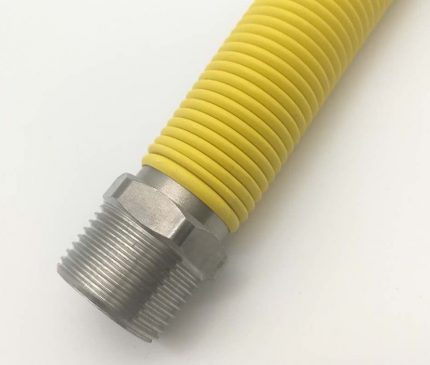
Simple models are presented in the form of a corrugated hose with a round cross-section, more advanced ones are protected by a special metal sleeve, and there are also products with a polymer coating.
You can also consider the upgraded version - hoses equipped with a thermal valve that cuts off gas at a critical temperature increase. Corrugated tubes are available in a characteristic bright yellow color.
Their main advantages:
- reliability and safety;
- flexible, but rather dense structure;
- exposure to a wide range of operating temperatures (-50 ... + 250);
- resistance to high pressure (up to 6 atmospheres);
- the possibility of lengthening twice;
- durability (service life about 30 years);
- compatibility with any gas equipment and fittings.
Professional gas workers believe that this type of hose most closely matches European standards and is best suited for modern gas systems. But they have one significant drawback - high cost.
Corrugated tubes are often connected in open areas where devices constantly experience cyclic temperature changes. Verified manufacturers of bellows hoses: Hydrosta, LAVITA, EMIFLEX, TuboFlex, Ayvaz.
View # 4 - oxygen hoses
There is another type of gas hoses - oxygen hoses. They are relatively inexpensive, have high strength, can withstand high pressure (up to 20 atmospheres).
However, experts highly recommend not installing an oxygen hose in the apartment. Now it is rarely found on new equipment.
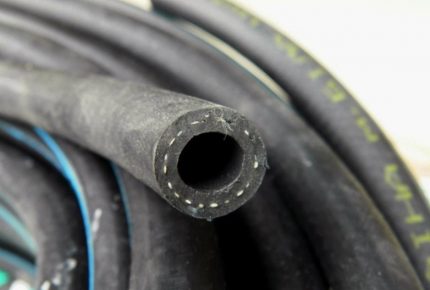
An oxygen hose is used as a temporary connection option, for example, in a country house for connecting a gas cylinder. In this case, do not forget to purchase and gas reducer to ensure the safety of the balloon.
For any gas appliance, you should use an eyeliner exclusively with the appropriate marking, confirming that the particular device is designed specifically for gas. When connecting geysers or stoves, water hoses are prohibited.
Features of choosing the best hose
It is advisable to purchase hoses for supplying gas to household equipment in specialized stores that can provide a quality certificate for each product.
In the assortment you can find models of different lengths. It is selected so that subsequently it is not necessary to dock several tubes with each other.
The most commonly used tubes are 1, 1.5 and 2 meters. This reduces the risk of eyeliner ruptures and, consequently, increased danger to apartment residents. If the length is not enough, the supply is supplemented by a metal pipe.
Another important indicator is the diameter of the cross section. The minimum value, which will ensure good cross-country ability and full gas supply to the device, is 10 mm.
The ends of the hoses are equipped with two nuts or one nut and a fitting. The nut has an internal thread, the union is external. The thread is selected in accordance with the output on the household appliance. If the output is direct, then a special fitting-corner is used.
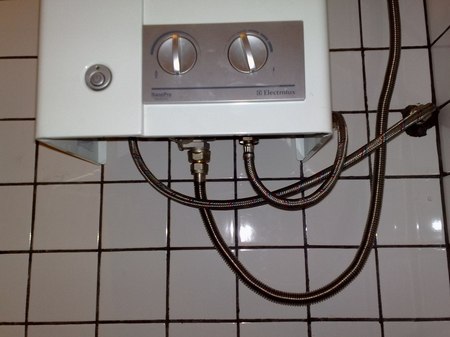
As a budget option, an ordinary rubber-fabric hose will fit. Choosing this product, you need to carefully monitor the degree of wear.
If the slightest cracks, damage or smell of gas are detected, replace them on time. When searching for a proposal that optimally combines price and quality indicators, it makes sense to stay on reinforced hoses.
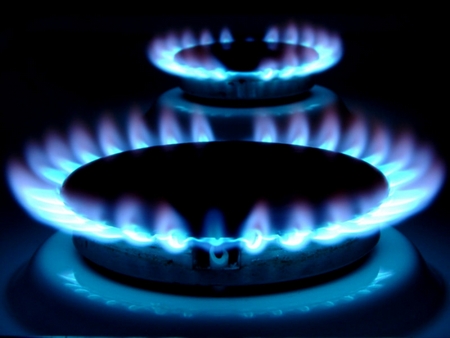
If finances allow, it is better to take a bellows hose. It is recognized as the safest and most reliable device - it is officially approved for use with household appliances by the city gas services.
Stopping your choice on it, you need to check the type of connection. Its quality directly affects the durability of the product. It is undesirable to take models in which the fitting is connected to the corrugation with glue. It is more advisable to find a solid or welded structure.
Credible Signs of Counterfeiting
Regardless of the type of flexible gas hose, make sure that the goods are genuine before purchasing.The fact is that recently cases of marriage and fakes, launched by Chinese manufacturers, have become more frequent.
Well-known European brands usually become objects of falsification. The difference in the quality of the original and the fake is enormous.
It is possible to play it safe and distinguish a quality product from a counterfeit.
To do this, you must:
- take time to thorough visual inspection;
- check whether the technical specifications correspond to those indicated in the product passport;
- require the seller to present quality certificates confirming the safety of the device designed to work with explosive substances;
- Do not buy goods at a suspiciously low price uncharacteristic for products in this category.
The structure of counterfeit goods may contain hazardous chemical or radioactive impurities. Defective hoses are short-lived and often cause explosions.
Secure Connection Instructions
If you have at least minimal skills, you can connect the gas to the device with your own hands.
In the work, you must adhere to the following rules:
- select the length of the eyeliner taking into account the distance over which the equipment will supposedly move;
- place the device in a place accessible for visual inspection without hiding it under the floor or in the wall;
- make sure that there are no other connections on the device (the exception is the wire that performs the function of lighting in the oven of the stove);
- Do not stain the product, as this leads to rapid cracking of the material;
- use gas hoses of standard sizes provided for by standards established by GOST;
- do not provoke electrolytic damage by connecting copper lugs with steel (safe combinations: steel-steel, brass-copper);
- avoid twisting, bending and stretching of the sleeve;
- Do not expose the joints to high temperatures (soldering, welding).
In multi-storey buildings, a common gas riser is installed, which has branches with cranes at the ends. They are present in each apartment and are called a lodging.
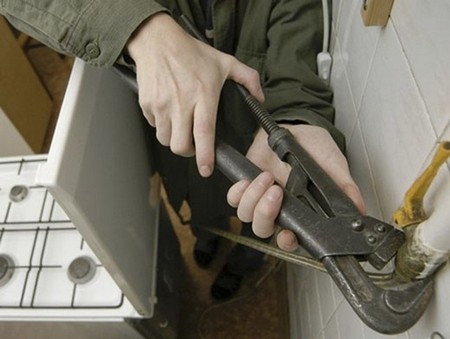
At the first stage of work, the room is prepared and the gas supply to the network is shut off. Then the equipment, whether it is a column or a plate, is exposed to the installation site and carefully leveled.
After that, put a sealant on the hose fitting and screw it into the tap on the lowering. If the thread on the device does not match the diameter of the sleeve, an adapter is required, which is also sealed. Next, the hose is connected to the equipment.
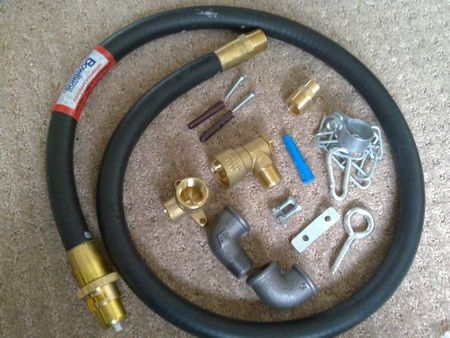
At the end, the tightness of the connecting elements is tested by opening the tap. This is easy to do with an ordinary soap emulsion and a small brush.
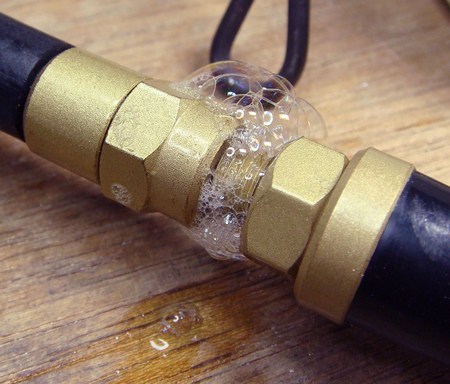
If an insufficient density of connections is detected, the crane handle is slightly screwed on and the winding is checked. The last step is to diagnose the functionality of the equipment and gas supply.
The most correct decision in case of insufficient self-confidence is to contact gas companies. Specialists will perform the connection in compliance with all standards, which will guarantee a healthy, safe and reliable system operation for many years.
On our site there are detailed instructions for replacing a gas hose and for connecting various gas equipment.
We suggest you familiarize yourself with these materials:
- Do-it-yourself gas hose replacement: installation rules
- How to transfer a gas pipe in an apartment: transfer rules and location tips
- DIY gas stove connection: how to install a gas stove in an apartment step by step
- Connection diagram of a dual-circuit gas boiler: how to properly supply gas to the boiler
- Do-it-yourself gas column installation in an apartment: requirements and technical standards for installation
Conclusions and useful video on the topic
More about the main types of flexible eyeliner in the video:
Video instruction for connecting the stove to gas:
The connection diagram of the gas column in the video clip:
Thanks to universal flexible hoses, it became possible to refuse to connect household appliances to gas pipes “tightly”. The mobility of such devices greatly simplifies the life of the owners of kitchen facilities, allowing you to easily move equipment for cleaning, moving or repairing without any special difficulties.
And what type of hose did you choose to connect the gas at home? Tell, which of the advantages of eyeliner has become the main reason for choosing? How long have you been using this flexible hose?
Or maybe you noticed an inaccuracy in the considered material or want to supplement the above with your own opinion? Please leave your comment under our article.

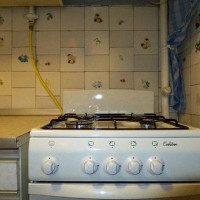 Gas hoses for gas stoves: varieties, how to choose and connect
Gas hoses for gas stoves: varieties, how to choose and connect 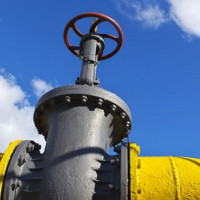 Gas pipes: a comparative overview of all types of gas pipes + how to choose the best option
Gas pipes: a comparative overview of all types of gas pipes + how to choose the best option 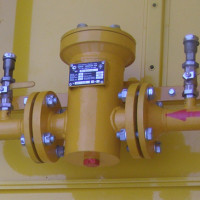 Gas filters: types, device, purpose and features of the choice of filter for gas
Gas filters: types, device, purpose and features of the choice of filter for gas 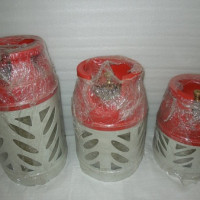 Gas cylinders made of composite materials: the pros and cons of gas cylinders for gas
Gas cylinders made of composite materials: the pros and cons of gas cylinders for gas 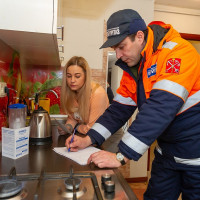 Gas connection in an apartment: procedure and rules for gas connection in apartment buildings
Gas connection in an apartment: procedure and rules for gas connection in apartment buildings  Stinks of gas from the stove: the causes of the smell of gas from the oven and from the burners and tips for eliminating them
Stinks of gas from the stove: the causes of the smell of gas from the oven and from the burners and tips for eliminating them  How much does it cost to connect gas to a private house: the price of organizing gas supply
How much does it cost to connect gas to a private house: the price of organizing gas supply  The best washing machines with dryer: model rating and customer tips
The best washing machines with dryer: model rating and customer tips  What is the color temperature of light and the nuances of choosing the temperature of the lamps to suit your needs
What is the color temperature of light and the nuances of choosing the temperature of the lamps to suit your needs  Replacement of a geyser in an apartment: replacement paperwork + basic norms and requirements
Replacement of a geyser in an apartment: replacement paperwork + basic norms and requirements
Changed the gas hose, in connection with the installation of a new stove. The old one was rubber, installed a bellows, by all criteria decided that it is more reliable, although at a price it is much more expensive. At first I wanted to do everything myself, but I was afraid and called a gasman. When the hose was checked for leaks, it was revealed that it “poisoned”. I had to go to the store and change to another, it turned out that there was a factory marriage.
Hello, Vladimir. Well, in any case, you yourself could have checked whether the hose was poisoned or not, in the old, old-fashioned way. It was necessary to spread with soap and water: if foaming, then poison, if not, then order! But you did absolutely right that you called the masters, gas jokes are bad! As for me, both of these hoses have their advantages and disadvantages. If you need a very long hose, then it’s more correct to buy a rubber one (or you need to twist a few reinforced nipples, which is an unnecessary connection), well, the rubber is more flexible, of course. But in terms of strength, I trust reinforced and bellows more, although they are much more expensive!
Tell me, please, are there any restrictions on the length of the hose? Is it possible to bend? I need to hide the hose that will go to the stove. Thanks for the answer.
According to European standards, the maximum length is two meters. In our SNiP, the length of the gas hose is in no way limited (paragraph 7.3 of Section 7 “Internal gas pipelines”). There are no restrictions on bending either.
Hello.
According to paragraph 3.21 of the Moscow standard for the operation of the housing stock ZhNM-2004/03 “Gas pipelines and gas equipment for residential buildings”, approved and enforced by the Decree of the Moscow Government dated 02.11.2004 No. 758-PP: “The connection of gas appliances to the gas pipeline is allowed through a flexible connection that does not have butt joints and has a heat resistance of at least 120 degrees“.
The same is said in ZhNM-2004/03 “Gas pipelines and gas equipment of residential buildings”, paragraph 3.21 (as amended on January 30, 2013).
But not only for the capital, the technical regulations of the VDGO:
“9.6. The design of the detachable connection at the points of attachment of the flexible hose to the domestic home gas pipeline and domestic gas-using equipment should ensure the tightness of the joints. Flexible hoses for connecting household gas-powered equipment to the gas consumption network or to an individual balloon installation must meet the following requirements:
1) do not have connections;
”2) comply with the parameters of the gas used;
3) have a service life of at least ten years.
For general rules, SP 41-108-2004, recommended by paragraph 5.5 (voluntary application document):
“The connection of heat generators to the pipeline is allowed to be provided using steel, copper or flexible hoses, including non-metal pipes having the necessary strength characteristics for long-term (at least 25 years) exposure to the transported gas. The length of the flexible hoses should be taken no more than 1.5 m. The flexible hoses to the heat generators must have a certificate of conformity“.
GOST R 52209-2004 2.2.2 Gas hoses and braid: “For the manufacture of a gas hose, use a tape made of austenitic steel grade 12X18H10T in accordance with GOST 4986, the braid is made of wire 12X18H10T in accordance with GOST 18143.”
In Ukraine, DNB limits the length of the inlet hose to 2 meters.
A hose in a brass (yellow metal) braid with black strokes in a spiral at a store was sold as for connecting a cylinder of liquefied gas to a gas column. The hose ends are made of white steel, the entry is yellow on the column ... I can not find a word about such hoses anywhere. Can they connect a cylinder and a column? It is written that the water hose ....
Hello. Please describe to us the marking on the hose and take a picture of it, we will try to help you.